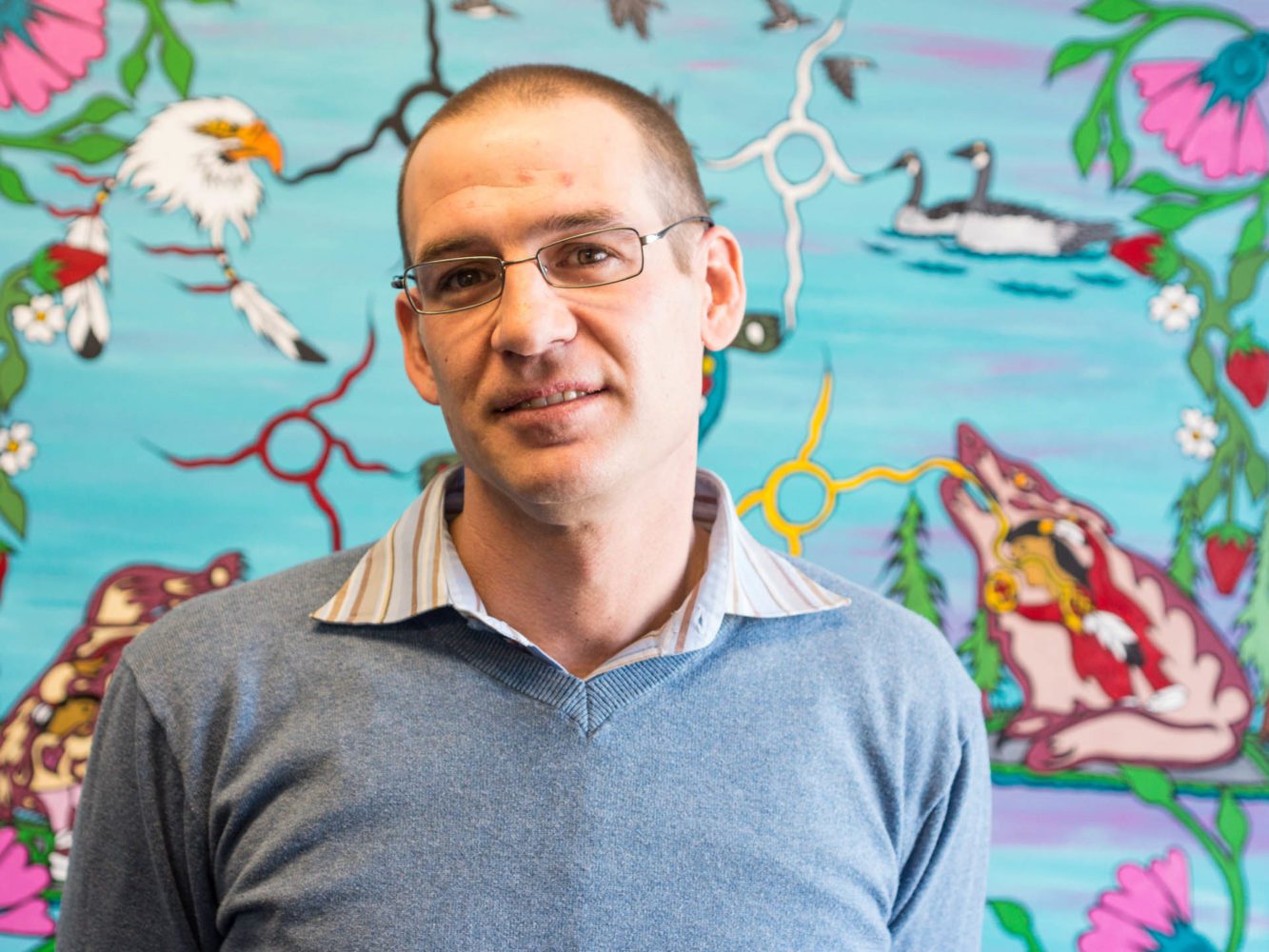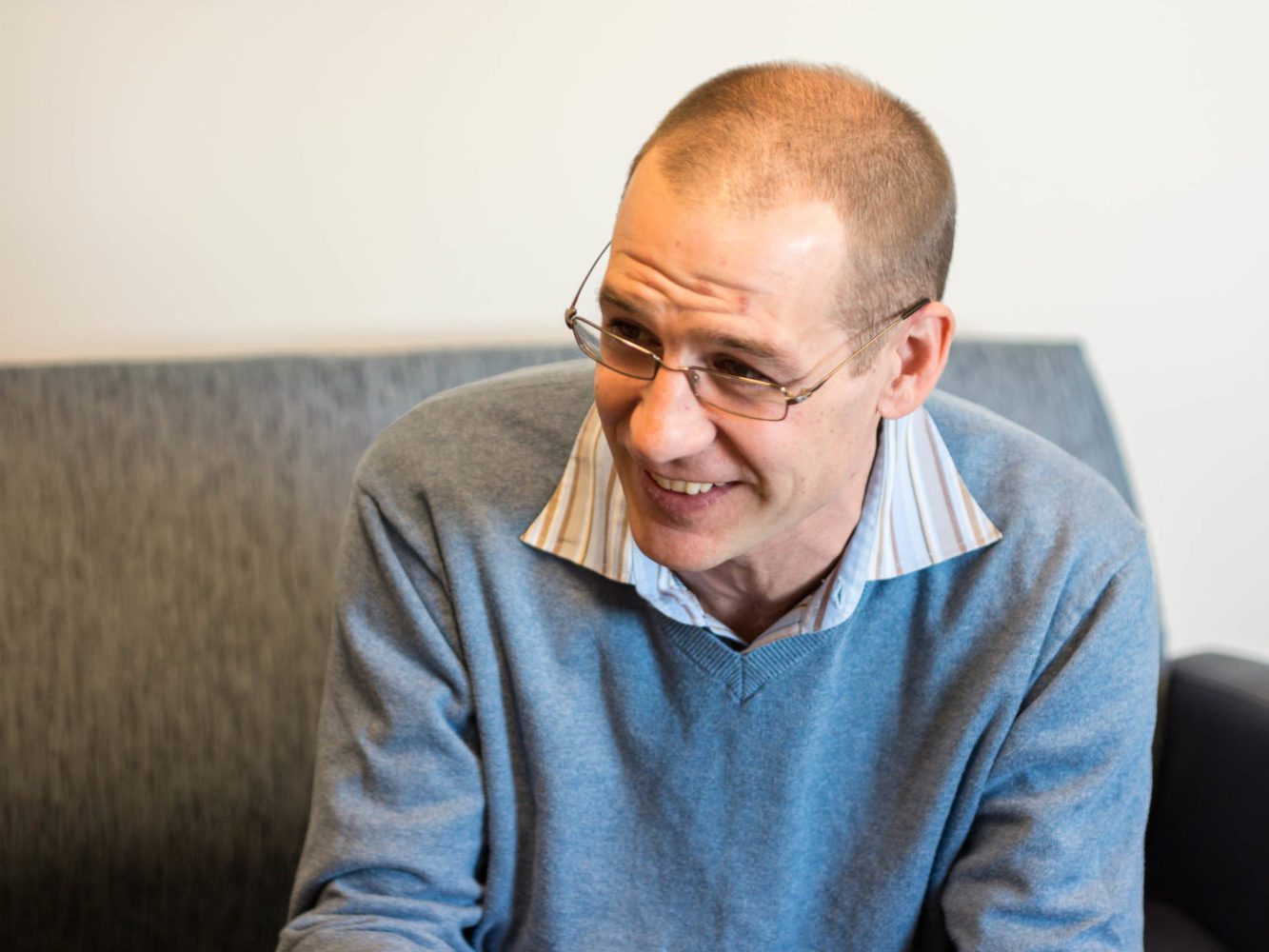Matthew coordinates cancer screening and prevention programs in southeastern Ontario. He talks about the importance of new communication strategies in health care.
“I have a degree in sports management and was employed by the Canadian Cancer Society for 11 years running events like Relay for Life and Daffodils. I worked with a lot of cancer survivors, caregivers and cancer thrivers, and fell in love with the cancer cause. I didn’t enjoy asking for money, but I loved talking to people about what they could do to reduce their risk of getting cancer. So this position was a natural fit for me.”

A significant number of people in aboriginal communities don’t have anyone to talk to about cancer. Recently we started a cancer talking circle facilitated by our aboriginal patient navigator. People who are in the middle of treatment and their family members are invited.
“The talking circles incorporate their cultural values. They enter from the west, there is no furniture between people, and all the tears that are shed into tissues are collected and burned at the end. Circles are very much a part of aboriginal cultures.”
What have you, as a non-indigenous person, learned from working with indigenous people?
“I’ve been very fortunate to work with two amazing aboriginal patient navigators who have shared their culture with me. Cancer Care Ontario has aboriginal cultural competency courses, which I have taken. The learnings made me feel very guilty.”
“I learned about the ’60s scoop and the residential schools. I didn’t know a lot of those things before. I think all Canadians should take something similar. It’s worth our time, and the aboriginal people deserve it. I don’t think many Canadians are aware of our history. I think that if we better understand our history, we will be better able to improve the future.”

“We have developed a podcast series called Cars and Cancer. It costs little to produce, uses the power of storytelling, is commercial free, and goes on people’s devices. Hugh Langley, our regional primary care and aboriginal lead, is my co-host. He’s the medical expert and I am the Joe public guy. In every episode we talk to specialists and patients about their experiences. The title is a slight riff on Comedians in Cars getting Coffee by Jerry Seinfeld.”
“We have done six episodes. The first was dedicated to the First Peoples of Canada. We went to a pow-wow and talked to aboriginal people about cancer screening. In the summer we had one on skin cancer, and around the new year we did one on lung cancer because we hoped that people would consider quitting smoking then.”

With the HPV vaccine and regular pap tests we should be getting close to zero people dying of cervical cancer. But in order to get a pap test, you need a doctor or a nurse practitioner, and around five percent of people don’t have one. So we established ‘Pap parties’ where we invite women without a family doctor to an event where they can get a pap done.
“We went outside of Kingston to areas where Cancer Care Ontario’s maps suggest there are high concentrations of people due for a pap smear. We advertised with posters and social media, and targeted low socioeconomic areas.”
“We weren’t asking people to come to a movie! We were asking people without a family doctor in communities of 3,000 people to come in for a pap test if they were due. Four people coming in a community of 3,000 is better than getting 16 people in Kingston.”
It’s a catchy name, but do you actually have a party?
“We have some coffee and treats, but we need to work on the party part! Next year we are going to change the name, partly because it doesn’t say cervical cancer screening anywhere in the name. I don’t like changing names — the most popular logos in the world are the Golden Arches and the Swoosh, and they’ve never changed. But I recognize the importance of making sure that we’re clear about what a pap test is and what we are doing.”

The marketing landscape is changing from traditional media like radio, newspaper and magazines to online. People want to consume media when and where they want. At the same time, we are getting fewer marketing dollars for health promotion. So our region is putting more effort into social media.
“One of the problems with traditional marketing and communication folks is that they are always trying to capture the perfect photo or quote. I think that timing is more important. The best tweet I can think of was when there was a black out during the Super Bowl and Oreo tweeted out that you can still dunk in the dark, with a picture of an Oreo in a dark room.”
“A year back we saw our social media presence grow and our director asked if we could take this to the next level. So, we decided to try Twitter chats. The next week Dana Farber and Mayo clinic started twitter chats. Same thing with the podcasts. We released episode one and the next week Dana Farber had a podcast. Not that they were copying us, but I knew we were on the right track. There is little risk because we have the final editing rights. Identifying patients for podcasts is kind of tough, but we just have to keep our eyes and ears open. Every guest that we have had so far has had a unique story.”

“Some people have never touched a cigarette or drink, work out two hours a day, don’t go in the sun, eat five to 10 vegetables every day, screen regularly — and they still get cancer! It’s so frustrating! It makes me think that we should be changing our terminology. Maybe we should move away from talking about cancer prevention to risk reduction.”
Does “risk reduction” resonate with patients as much as “prevention”?
“Absolutely not. It’s going to take a lot of time to change the way we think and talk about risk reduction.”


The comments section is closed.